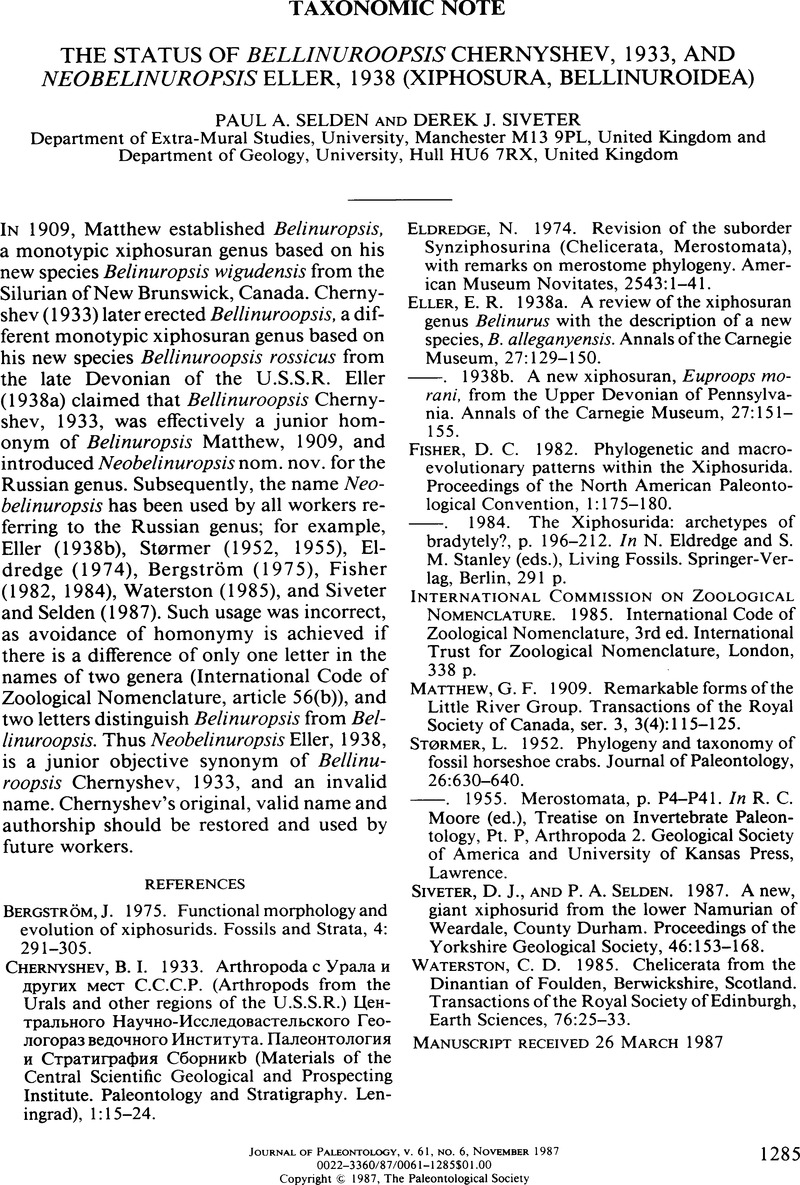Crossref Citations
This article has been cited by the following publications. This list is generated based on data provided by Crossref.
Bicknell, Russell D. C.
Naugolnykh, Serge V.
and
Birch, Sienna A.
2020.
A reappraisal of Paleozoic horseshoe crabs from Russia and Ukraine.
The Science of Nature,
Vol. 107,
Issue. 5,





